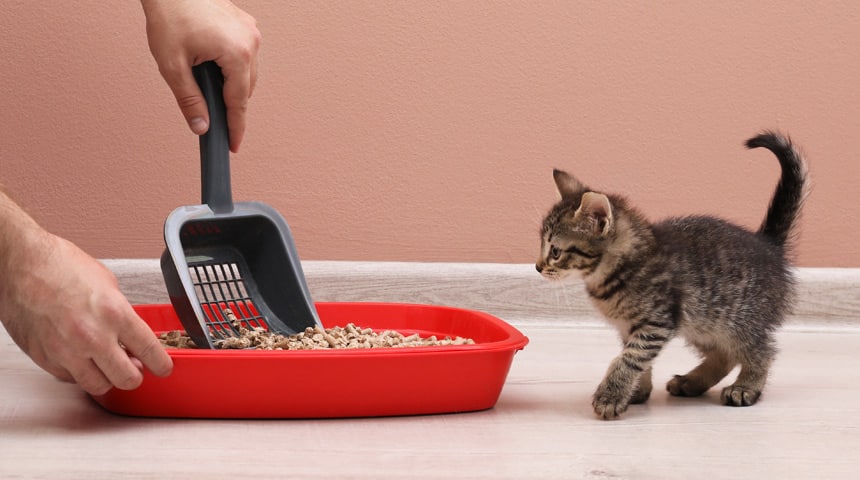
If your cat is suddenly avoiding the litter box, it could be due to stress, environmental factors, or medical issues. Here's how to address the problem and help your cat get back on track:
-
-
- Identify Stressors
Recent changes in your cat's environment—such as a new pet, family member, move, change in diet, or even a shift in routine—could be causing stress. Subtle changes like temperature shifts or a new type of litter can also affect your cat's behavior. - Provide Enough Litter Boxes
Make sure you have one litter box per cat, plus one extra. In a 3 cat household, this would mean 4 litter boxes in total. The box should be large enough—at least the full length of the largest cat from nose to tail, and wide enough to accommodate their body. - Place Litter Boxes in Quiet Areas
Litter boxes should be in low-traffic, quiet spots. Avoid placing them in noisy or busy areas. Consider setting up a private space for the affected cat, especially if you have multiple cats. - Avoid Covered Litter Boxes
Covered litter boxes can be stressful for cats. Stick with open boxes to give your cat more comfort and space. - Choose the Right Litter
Avoid scented litters or fine-grain types, which may irritate your cat. If you're unsure which litter your cat prefers, try a few different types and see what they like best. - Clean the Litter Box Regularly
Scoop the litter daily and change it frequently. Clean the box with a diluted bleach solution (1 part bleach to 50 parts water) once a month to eliminate odors and bacteria. - Keep Food and Water Separate
Place your cat's food and water bowls in a quiet, calm area, away from windows, air ducts, or the litter box. Ideally, keep them separate from each other to ensure your cat feels safe while eating and drinking. - Give Your Cat More Space
Cats are independent and may need their own space. Consider setting up a quiet room with a scratching post, food, water, and litter box where your cat can retreat when feeling stressed. - Make Changes Gradually
If you need to alter your cat's diet or routine, do so gradually. Sudden changes can cause anxiety or confusion. - Use Synthetic Pheromones
Products like Feliway® can help reduce stress by mimicking natural pheromones. Use sprays or plug-in diffusers in areas where your cat spends a lot of time. - Enhance Your Cat's Environment
To further reduce stress, add hiding spots, shelves, or access to high furniture where your cat can observe the environment from a safe, elevated position. - Visit the Veterinarian
If your cat continues to avoid the litter box, schedule a vet check-up to rule out medical issues like urinary tract infections or gastrointestinal problems. Your vet may also suggest stress-relieving medications if necessary.
- Identify Stressors
-
By addressing both the environmental and physical factors that contribute to inappropriate litter box behavior, you can help your cat feel more comfortable and secure in their home.
Feel free to discuss this issue with our team; they will be happy to provide you with advice or redirect you to various helpful resources.
Share:
Array

